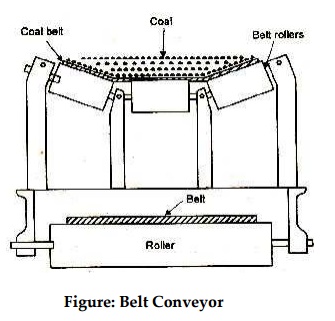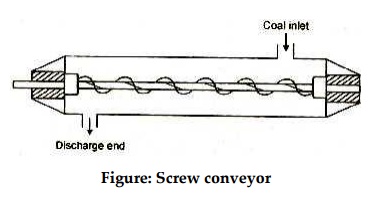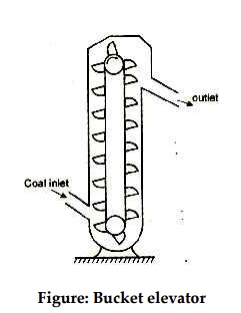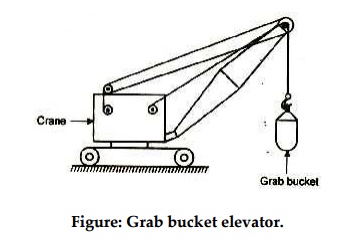Belt Conveyor
Figure: Belt Conveyor

Figure shows a belt conveyor. It consists of an endless belt moving over a pair of end drums (rollers). At some distance a supporting roller is provided at the centre. The belt is made up of rubber or canvas. Belt conveyor is suitable for the transfer of coal over long distances. It is used in medium and large power plants. The initial cost of system is not high and power consumption is also low. The inclination at which coal can be successfully elevated by belt conveyor is about 20°. Average speed preferred than other types.
Advantages of belt conveyor
1. Its operation is smooth and clean
2. It requires less power as compared to other types of systems
3. Large quantities of coal can be discharged quickly and continuously
4. Material can be transported on moderate inclines.
2. Screw Conveyor
It consists of an endless helicoid screw fitted to a shaft (figure). The screw while rotating in a trough transfers the coal from feeding end to the discharge end.

Figure: Screw conveyor
This system is suitable, where coal is to be transferred over shorter distance and space limitations exist. The initial cost of the consumption is high and there is considerable wear o screw. Rotation of screw varies between 75-125 r.p.m
3. Bucket elevator
It consists of buckets fixed to a chain (figure). The chain moves over two wheels. The coal is carried by the bucket from bottom and discharged at the top.

4. Grab bucket elevator
It lifts and transfers coal on a single rail or track from one point to the other. The coal lifted by grab buckets is transferred to overhead bunker or storage. This system requires less power for operation and requires minimum maintenance.
The grab bucket conveyor can be used with crane or tower as shown in figure . Although the initial cost of this system is high but operating cost is less.

Figure: Grab bucket elevator.
Storage of Coal
It is desirable that sufficient quantity of coal should be stored. Storage of coal gives protection against the interruption of coal supplies when there is delay in transportation of coal or due to strike in coal mines. Also when the prices are low, the coal can be purchased and stored for future use. The amount of coal to be stored depends on the availability of space for storage, transportation facilities, the amount of coal that will whether away and nearness to coal mines of the power station. Usually coal required for one month operation of power plant is stored in case of power stations are situated at longer distance from the collieries whereas coal need for about 15 days is stored in case of power station situated near to collieries. Storage of coal for longer periods is not advantageous because it blocks the capital and results in deterioration of the quality of coal.

